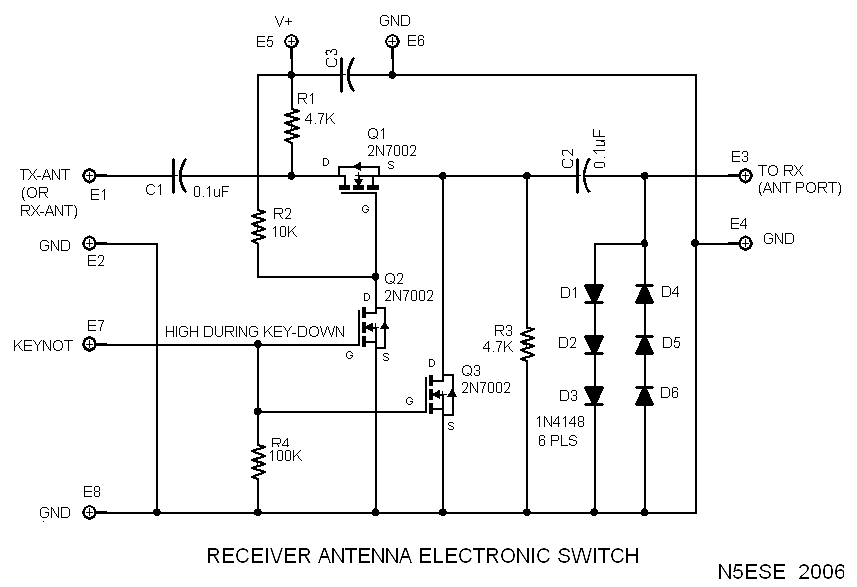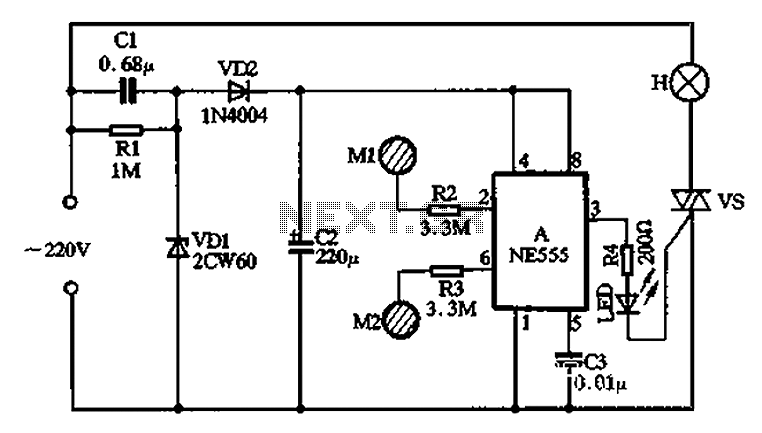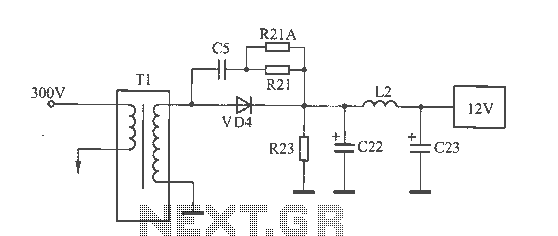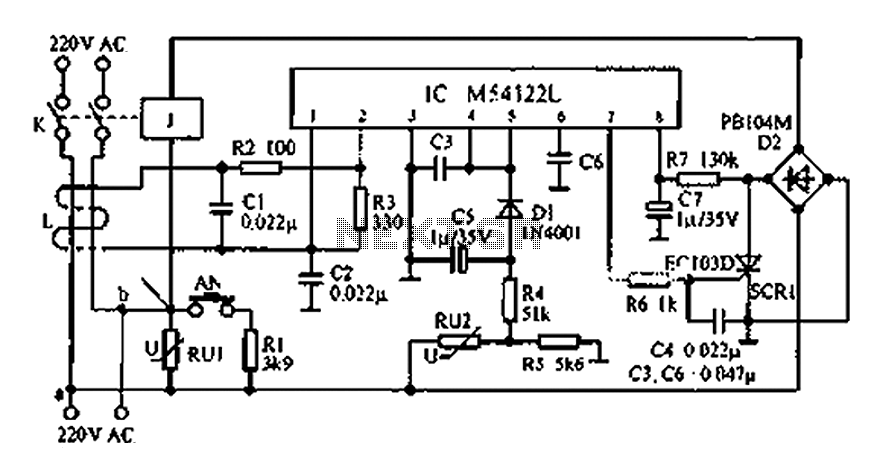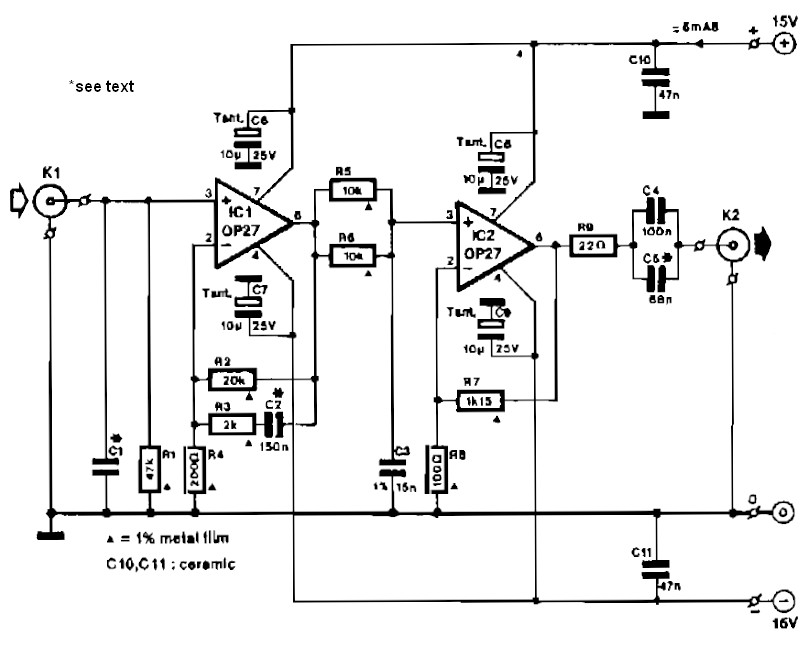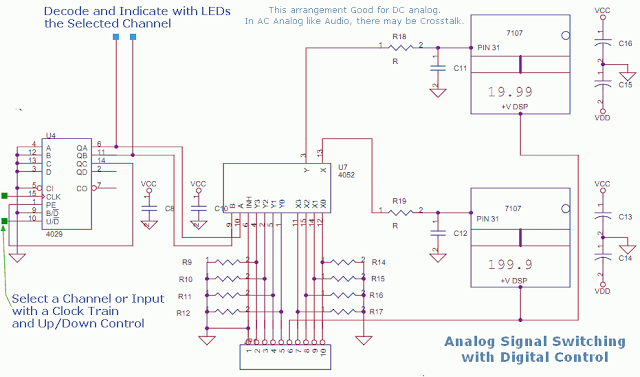
Magnetic proximity switch

The circuit diagram illustrates a magnetic proximity switch, which is utilized in various applications. It features a magnetic reed switch (S1) as the proximity sensor. The circuit includes a monostable multivibrator utilizing the NE555 integrated circuit (IC1) and a toggle flip-flop based on the CD4013 integrated circuit (IC2). When a magnet approaches S1, the switch closes, providing a negative trigger at pin 2 of IC1. The output from IC1 transitions to a high state for a duration determined by the resistor R2 and capacitor C2. This output clocks IC2, configured as a toggle flip-flop. Consequently, the output at pin 1 of IC2 goes high, turning on transistor Q1. This activation energizes the relay, which in turn powers the connected equipment. Additionally, an LED (D1) illuminates when IC1 is triggered.
The magnetic proximity switch circuit operates effectively across various fields by utilizing a magnetic reed switch (S1) that acts as the sensing element. The reed switch is sensitive to magnetic fields and closes in the presence of a magnet, allowing for the detection of proximity. The NE555 timer (IC1) functions in a monostable mode, which means it produces a single output pulse in response to the triggering event. The timing of this pulse is controlled by the resistor R2 and capacitor C2, which set the duration for how long the output remains high after the initial trigger.
Following the output pulse from IC1, the CD4013 flip-flop (IC2) is triggered, which is configured to toggle its output state. The high state at pin 1 of IC2 activates transistor Q1, which is typically used as a switch to control larger loads. When Q1 is turned on, it allows current to flow through the relay coil, thereby energizing the relay. This mechanism enables the control of various devices or equipment that are connected to the relay contacts, allowing them to be turned on or off as needed.
The circuit also includes an LED (D1) that provides a visual indication of the operation of the proximity switch. When the reed switch closes and triggers the NE555 timer, the LED illuminates, signaling that the circuit has been activated. This feature is particularly useful for troubleshooting and confirming the functionality of the circuit in practical applications.
Overall, this magnetic proximity switch circuit is a versatile solution for applications requiring non-contact detection and control, making it suitable for automation, security systems, and various industrial processes.Here is the circuit diagram of a magnetic proximity switch that finds a lot of applications in many fields. The circuit is based on a magnetic reed switch(S1) as the proximity sensor. A monostable multivibrator based on NE555 (IC1) and a toggle flip flop based on CD4013 (IC2) does the rest of the circuit.
When a magnet is reached in proximity of S1 it closes to give a negative trigger at pin 2 of IC1. The output of IC1 goes high for a time determines by R2 and C2. This clocks the IC2 wired as a toggle flip flop. The output (pin 1 ) of IC2 goes high and the transistor Q1 is biased to ON. The relay is activated and so do the equipment connected to the relay. The LED D1 glows when IC1 is triggered. 🔗 External reference
The magnetic proximity switch circuit operates effectively across various fields by utilizing a magnetic reed switch (S1) that acts as the sensing element. The reed switch is sensitive to magnetic fields and closes in the presence of a magnet, allowing for the detection of proximity. The NE555 timer (IC1) functions in a monostable mode, which means it produces a single output pulse in response to the triggering event. The timing of this pulse is controlled by the resistor R2 and capacitor C2, which set the duration for how long the output remains high after the initial trigger.
Following the output pulse from IC1, the CD4013 flip-flop (IC2) is triggered, which is configured to toggle its output state. The high state at pin 1 of IC2 activates transistor Q1, which is typically used as a switch to control larger loads. When Q1 is turned on, it allows current to flow through the relay coil, thereby energizing the relay. This mechanism enables the control of various devices or equipment that are connected to the relay contacts, allowing them to be turned on or off as needed.
The circuit also includes an LED (D1) that provides a visual indication of the operation of the proximity switch. When the reed switch closes and triggers the NE555 timer, the LED illuminates, signaling that the circuit has been activated. This feature is particularly useful for troubleshooting and confirming the functionality of the circuit in practical applications.
Overall, this magnetic proximity switch circuit is a versatile solution for applications requiring non-contact detection and control, making it suitable for automation, security systems, and various industrial processes.Here is the circuit diagram of a magnetic proximity switch that finds a lot of applications in many fields. The circuit is based on a magnetic reed switch(S1) as the proximity sensor. A monostable multivibrator based on NE555 (IC1) and a toggle flip flop based on CD4013 (IC2) does the rest of the circuit.
When a magnet is reached in proximity of S1 it closes to give a negative trigger at pin 2 of IC1. The output of IC1 goes high for a time determines by R2 and C2. This clocks the IC2 wired as a toggle flip flop. The output (pin 1 ) of IC2 goes high and the transistor Q1 is biased to ON. The relay is activated and so do the equipment connected to the relay. The LED D1 glows when IC1 is triggered. 🔗 External reference
